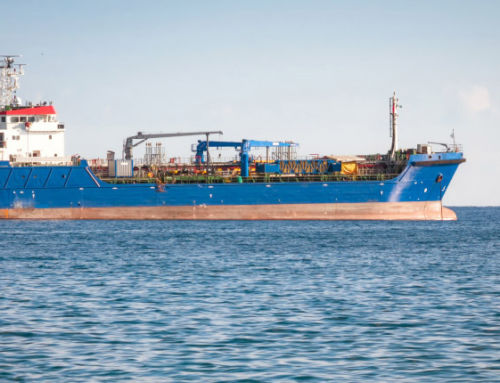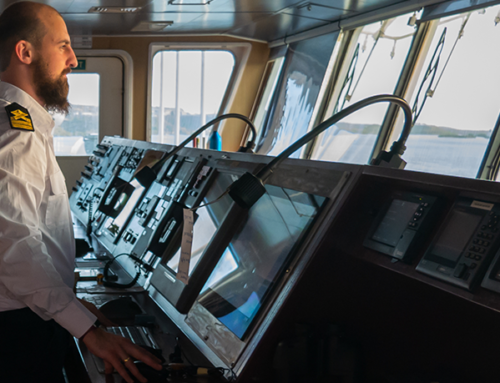We’ve been helping ships ensure rest hours compliance for years. Over the years, we’ve come across a host of questions about the MLC 2006 and STCW 2021 rest hours regulations. So, we’ve compiles some most frequently asked ones. If you don’t find an answer to your question, comment below and we will send you an answer.
What is the Procedure to Record Work and Rest Hours?
Work and rest hours need to be recorded by the master of the ship or any person authorized by the master. The person is responsible for monitoring and recording the rest hours for every seafarer for every 24-hour period as well as every 7-day period.
When Should the Recording of Work and Rest Hours Begin for a Seafarer?
The working period is calculated from the first hour a seafarer takes charge onboard a vessel. Following the first work period on the first working day, rest hours are monitored and recorded. A seafarer must get 10 hours of rest in a span of 24 hours and 77 hours of rest in the span of 7 days.
Are Short Breaks Included in the Term “Hours of Rest”?
No, short breaks are not included in hours of rest. Any period shorter than an hour cannot be termed as rest hours. Whether a seafarer takes a break between his hours of duty, has only a few tasks to complete during his work hours or takes a break for lunch, these cannot be included as rest hours.
What Does “Any 24-Hour Period” Mean in Maritime Law?
This concept comes into play for ensuring rest hours compliance with MLC 2006 and STCW 2010 regulations. It means that the rules must be met for 24 hours irrespective of when you start during the day. So, for planning, calculating, and auditing work and rest hours, one can begin the day at say 9am GMT and another at 2pm GMT, but check both for the next 24 hours to ensure that there is at least 10 hours of rest.
Can There Be an Exception or Agreement to Reduce the Minimum Hours of Rest Under MLC 2006?
Yes, some exceptions are permitted. During emergencies, such as distress at sea or rough weather, the master of the ship has the power to suspend the rest hours. As a result, the 10-hour rest period can be broken down into several periods. The rest hours in a week can be reduced to 70 hours.
The ILO does allow a competent authority to authorise or register collective agreements that permit exceptions. However, these exceptions need to follow the provisions of the Standard. For instance, parties can negotiate more frequent or longer leave periods for watchkeeping seafarers. But, they cannot reduce the rest hours below the stipulated norms.
Do the Captain of the Ship Also Fall Under the Purview of Rest Hours Requirement?
Yes, the ship’s captain or master is a seafarer too. So, the laws of MLC 2006 and STCW 2010 apply to them.
When Should the Calculation or Recording of Hours of Rest Begin?
Rest hours need to be monitored by the master of the ship or an authorised person every 24-hour and 7-day period. This commences from the moment a seafarer reports for duty (first watch) on a calendar day. The period ends at the same time the following day.
Is a 6/6 Watch Schedule in Compliance with the Provisions Relating to Rest Hours Under MLC 2006?
The provisions under the STCW Convention apply to rest periods for watchkeepers. As long as one of the rest periods during a 24-hour period is 6-hours long, the 6/6 watch schedule can be implemented. The 6/6 schedule (6 hours of duty followed by 6 hours of rest, twice a day) is in fact the traditional sea watch system that has been in place for years.
Can Rest Hour Data be Captured Electronically on Ships?
Yes, it is up to the shipping company to decide which rest hour management system they wish to use. However, the rest hours software must ensure compliance with the MLC 2006 and STCW 2010 rules.
A rest hour management system can allow the crew to maintain updated records with ease and present them in a particular format to concerned authorities for inspection. The best rest hours software automatically generates audit reports for compliance.
Does the Seafarer Receive a Signed Copy of the Rest Hour Records?
As per the ILO’s convention no. 180, a seafarer should receive their copy of records. This needs to be endorsed by the master of the ship or any person authorised by the master, along with the seafarer.
What are the Maximum Hours of Work?
As per Regulation 2.3 of the MLC 2006, the hours of work on a vessel should not exceed:
- 14 hours in any 24-hour period; and
- 72 hours in any seven-day period
Furthermore, the law defines that the minimum hours of rest must be at least:
- 10 hours in any 24-hour period; and
- 77 hours in any 7-day period.
Rest hours may be divided into no more than 2 periods, and one of them has to be at least 6 hours long. The interval between consecutive rest hours should not exceed 14 hours. This means that the maximum hours of work cannot be more than 14 hours at a stretch.
Can Seafarers Participate in Drills During their Scheduled Hours of Rest?
Yes. Scheduled hours of rest may be delayed or suspended in situations related to a ship’s safety. This includes firefighting and lifeboat drills, musters, and other drills made mandatory by national and international laws. However, these events must be planned and conducted in a manner that has the least impact on the seafarers’ rest periods. The master needs to make sure that it is not always the same people who participate in drills during their rest hours. Any disruption to scheduled hours of rest has to be recorded diligently and compensated adequately.
For How Long Should the Records of Hours of Rest be Maintained?
The records need to be maintained for 3 years, to ensure availability between MLC inspection dates. When you choose rest hours software, ensure the solution includes maintaining records on your behalf for more than 3 years.
If I am Called Up for Duty During Rest Hours, What Should Be Mentioned in the Registration Form for Rest Periods?
You need to provide only the actual hours of rest in a 24-hour period in the form. This means that the form should reflect the interruptions in your scheduled hours of rest. You have to be given compensatory hours of rest for this disruption.
Even if a scheduled rest period is disrupted, a seafarer must receive not less than 10 hours of rest in any 24-hour period. Due to callouts during rest hours, the hours of rest may be divided into 2 periods, at least one of which should be 6 hours at a stretch.
Can Seafarers Work on Public Holidays?
Yes, seafarers might need to work on public holidays. However, as per MLC 2006, national laws or collective agreements may provide compensation for work performed during public holidays. This includes equivalent time off-duty, additional leave, or remuneration.
Public holidays differ across countries. Other holidays could be applicable to foreign crew members onboard.
Do Crew Members on Small Workboats Need to Record and Document Hours of Rest?
The MLC 2006 stipulates proper recording and documentation of work and rest hours of seafarers. It applies to all registered commercial vehicles of all flag states. However, to carry the MLC certificate, vessels must be over 500 GRT. Vessels that are below 500 GRT have to voluntarily comply with the convention as documented by flag states.






Leave A Comment